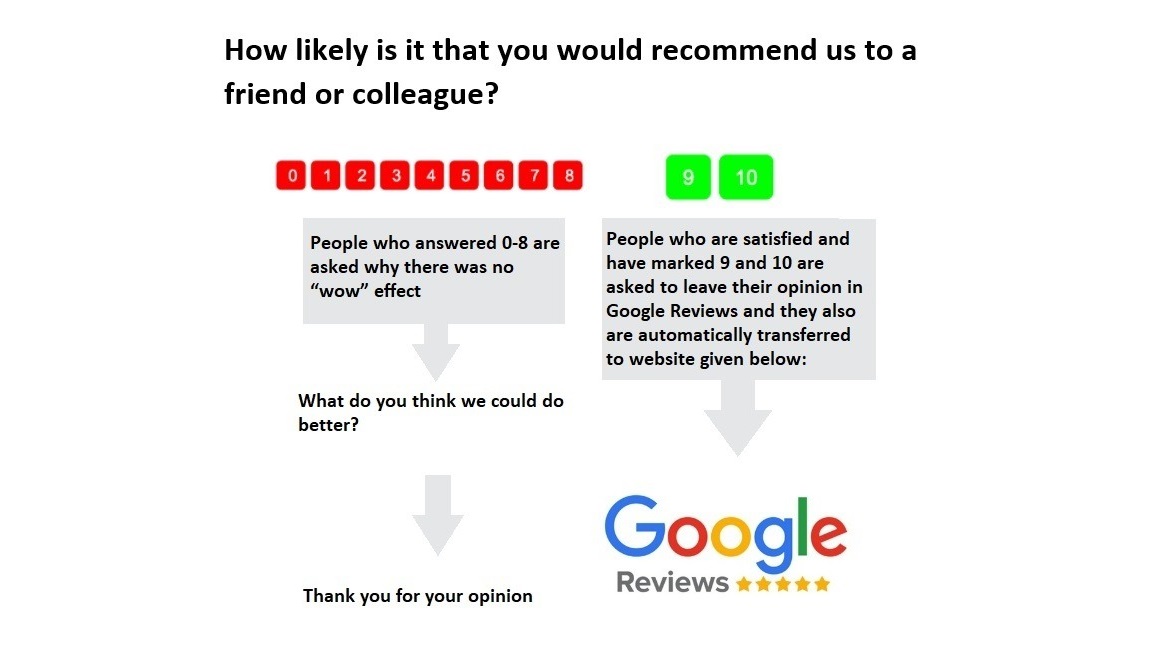You don’t need a crystal ball to anticipate your customers’ next moves. Customer experience tools aren’t magic—they’re proven strategies that can help you understand and predict future customer behavior. Curious how it works? Let’s dive in, and I’ll walk you through how businesses can use data, insights, and feedback to get ahead of customer needs and keep them coming back.
Before we move on and consider how to influence customer behavior, let’s pause for a moment to provide a brief definition. So that we are all on the same page, regardless of our previous knowledge on the subject.
Consumer Behavior Definition:
Customer behavior refers to the actions, decisions, and buying patterns of individuals or groups when they interact with products, services, or brands. It includes how they search for, choose, purchase, use, and respond to offerings, influenced by personal preferences, social factors, and external stimuli.
In brief: Understanding customer behavior helps businesses tailor their strategies to meet customer needs and drive better outcomes.
Enough theory. Off we go!
How Does Customer Behavior Prediction Work?
Think of customer behavior predictions like planning a great dinner for friends.
You want everything to be just right, so you pay attention to what they like, what they’ve enjoyed before, and maybe even the little hints they’ve dropped. This is very much how predicting customer behavior works – we listen, we learn, and we anticipate.
Consumer Behavior Prediction Step by Step
- Listening to Preferences
The first step is gathering information (current and historical data), just like when you ask your friends about their favorite foods or notice what they choose when you eat out together. In the business world, this means collecting valuable insights on things like what customers browse online, what they buy, and how they interact with us.
- Spotting Patterns
Once we have all this information, it’s time to look for patterns. It’s like noticing that one friend always prefers spicy dishes or that another never skips dessert. These patterns (in CX we may say customer segmentation) help us figure out what customers might want in the future based on what they’ve enjoyed in the past.
- Using Smart Insights
Next, we bring in some clever tools to help us with predictive analytics. Think of it as using a recipe that combines all the ingredients your friends love into a perfect meal. We use AI and algorithms to analyze the data and make predictions, figuring out what customers are likely to do next – maybe they’ll be interested in a new product or a special offer.
- Making It Personal
Finally, it’s all about making the experience feel personal. Just like when you serve a dish that’s exactly what your friends were craving, we want to offer customers what they need or want, often before they even ask. This way, shopping feels smoother, faster, and influence future customer behavior.
So, just like planning that perfect dinner, predicting customer behavior is all about paying attention, identify patterns, and offer something that feels right, making the (customer) experience better for everyone!
Hungry for more? Let’s move on.

What Customer Behaviors Should You Analyze?
To deliver the best possible experience for your customers and encourage them to stay loyal, it’s essential to focus on a few key behaviors. Understanding these can help improve your services, target the right audience, and drive business growth.
Churn
One crucial behavior to monitor is customer churn, which refers to when customers stop using your product or service. Identifying who is leaving and the reasons behind it reveals potential problem areas. This might include common frustrations or competition offering something better. Addressing customer retention allows you to make improvements that encourage more clients to stay engaged and satisfied.
Demographics Data
Demographics data, including factors like age, location, income, and gender, also plays a major role. Understanding who your customers are enables you to tailor your products and communication to meet their specific needs. For instance, younger customers might gravitate toward mobile apps, while older demographics may prefer in-store shopping experiences. Knowing these preferences helps you align your approach with what resonates best with each group.
Customer Value
Customer lifetime value, or how much a customer contributes to your business over time, is another important behavior to analyze. Some customers may make frequent, smaller purchases, while others spend more occasionally. Analyzing these spending patterns helps identify your most valuable clients and informs strategies for retaining them. Customer loyalty programs or personalized offers can then be designed to reward and retain those who are most important to your business.
By focusing on churn, demographics, and customer value, you can build stronger relationships with your customers, keep them loyal, and provide the right products and services at the right time. Below you will find some tools to help you succeed.
Customer Surveys as Predictive Tools
Customer surveys are powerful tools for predicting future behaviors and understanding what customers really want. They give direct insight into satisfaction, effort, and loyalty, helping businesses anticipate needs and make improvements. Let’s look at some of the most important surveys that help unlock customer intent and behavior.
Net Promoter Score (NPS)
The Net Promoter Score is one of the most popular tools for measuring customer loyalty. It’s built around a simple question: “How likely are you to recommend us to a friend or colleague?” Customers respond on a scale from 0 to 10, and this feedback tells you who your promoters are (loyal customers who’ll keep coming back) and who might be at risk of leaving. By tracking NPS over time, you can predict future growth and spot areas where customers might need more attention.
NPS Survey Template
The Net Promoter Score (NPS) is a world-renowned methodology and one of the best business tools for researching customer loyalty. You will draw remarkably valuable conclusions with such simple to collect and valuable feedback.
NPS Survey Template
The Net Promoter Score (NPS) is a world-renowned methodology and one of the best business tools for researching customer loyalty. You will draw remarkably valuable conclusions with such simple to collect and valuable feedback.
Customer Satisfaction Score (CSAT)
The Customer Satisfaction Score is all about measuring how happy customers are with a specific interaction or purchase. After a service call, purchase, or delivery, you might ask customers to rate their experience on a scale from 1 to 5. This survey helps you gauge how well you’re meeting customer expectations and can signal whether someone is likely to return. When satisfaction is high, future purchases and positive word-of-mouth are more likely.
Interested in improved customer satisfaction? Check out ready-to-use CX surveys!
Customer Satisfaction Survey
Customer satisfaction is the cornerstone of any successful business. Happy customers are more likely to remain loyal, refer others, and ultimately drive growth.
Customer Satisfaction Survey
Customer satisfaction is the cornerstone of any successful business. Happy customers are more likely to remain loyal, refer others, and ultimately drive growth.
Customer Effort Score (CES)
Another valuable tool is the Customer Effort Score, which measures how easy it is for customers to interact with your business. The question might be something like, “How easy was it to solve your problem with us today?” If customers report that things were difficult, they may be less likely to stick around. On the flip side, making interactions easy can boost loyalty. Understanding effort helps businesses streamline processes and predict where friction could cause customers to churn.
Customer Effort Score Survey
Satisfied customers are likelier to remain loyal and promote your brand through word-of-mouth. Many businesses turn to metrics like the Customer Effort Score (CES) to gauge customer satisfaction effectively.
Customer Effort Score Survey
Satisfied customers are likelier to remain loyal and promote your brand through word-of-mouth. Many businesses turn to metrics like the Customer Effort Score (CES) to gauge customer satisfaction effectively.
Product Feedback Surveys
A great way to get detailed insights into how your customers feel about specific products or services. These surveys ask about features, usability, and overall satisfaction, giving you a clear understanding of what works and what could use improvement. By gathering direct feedback, you can identify trends in customer preferences and better predict how future product launches might be received. This helps ensure your offerings stay aligned with customer needs and expectations, driving both loyalty and positive word-of-mouth.
Product Feedback Survey
In product development, understanding customer experience is crucial. One effective way to achieve this is through product feedback surveys.
Product Feedback Survey
In product development, understanding customer experience is crucial. One effective way to achieve this is through product feedback surveys.
Exit Surveys
Even when a customer decides to leave, there’s still an opportunity to learn valuable insights. Exit surveys ask departing customers why they’re leaving, uncovering pain points or unmet needs that might have gone unnoticed. These insights can not only help improve your service for others, but they can also reveal patterns that may signal broader issues affecting many customers. While it’s never ideal to see a customer go, the information they provide can be incredibly useful for predicting and preventing churn in the future.
Customer Exit Survey Template
Each customer’s success is your success. Therefore, understanding why clients leave is crucial. A customer exit interview can provide valuable feedback that can help businesses to identify areas for improvement and make data-driven decisions.
Customer Exit Survey Template
Each customer’s success is your success. Therefore, understanding why clients leave is crucial. A customer exit interview can provide valuable feedback that can help businesses to identify areas for improvement and make data-driven decisions.
Future Trends in Customer Behavior Prediction
The future of customer behavior prediction will be shaped by several key trends, driven by advancements in technology and shifting consumer habits. Here’s a look at some of the most important trends to watch.
AI and Machine Learning
Artificial Intelligence (AI) and Machine Learning (ML) will continue to revolutionize customer behavior prediction. These technologies enable businesses to analyze vast amounts of data quickly and accurately, identifying patterns and trends that might otherwise go unnoticed.
Natural Language Processing (NLP) is becoming especially valuable for understanding customer feedback in real-time, whether through social media, reviews, or customer support interactions. AI tools will allow businesses to predict what customers want even before they ask for it, personalizing marketing efforts and CX more than ever.
Influencer Marketing
The influence of social media and digital personalities will keep growing. By 2025, influencer marketing is expected to see a 25% increase in growth compared to recent years.
As consumers increasingly turn to influencers for product recommendations and trends, businesses can use these insights to predict purchasing behavior. Knowing which influencers your customers follow helps tailor marketing strategies and promotions, making this an essential tool for understanding future customer preferences.
The Power of Online Reviews
Customer reviews, particularly on platforms like Google, will play a bigger role in shaping purchasing decisions. Real-time activities such as reviews, ratings, and recommendations provide valuable data on customer satisfaction and product quality.
Monitoring these reviews helps predict future behaviors, like repeat purchases or potential churn, and gives businesses insight into areas needing improvement. The growing reliance on reviews also highlights the need for transparency and trust, as customers are increasingly influenced by peer feedback before making decisions.
Read our guide on how to improve Google Maps reputation.

Sustainability and Ethical Consumption
Consumers are becoming more conscious about sustainability and the ethical implications of their purchases. This shift means that businesses need to predict customer preferences based on values like eco-friendliness, fair trade, and responsible sourcing.
In the future, companies that offer sustainable and ethically produced products will likely see higher loyalty and retention rates. By analyzing customer behavior through this lens, businesses can better align with the values driving purchasing decisions.
Personalization Through Data Integration
In the coming years, consumers will expect highly personalized experiences based on their unique preferences and past interactions. With more data available from multiple touchpoints—online, in-store, through apps, or even voice assistants—businesses will need to integrate these sources to create a seamless customer journey.
Predictive models that take into account a holistic view of the customer’s behavior will help companies offer personalized recommendations, timely offers, and tailored communication, driving higher engagement and conversion rates.
Predicting Customer Behavior – Important Tips
Time for a summary. Or the TL;DR section. Here’s our recommendation:
- Leverage AI and Machine Learning: Use advanced technologies like AI and ML to analyze data quickly and uncover hidden patterns that can predict future behavior.
- Monitor Customer Churn: Keep an eye on churn rates to identify pain points and improve customer retention strategies.
- Utilize Customer Surveys: Tools like NPS, CES, and CSAT provide direct feedback that helps predict customer loyalty, satisfaction, and areas for improvement.
- Analyze Demographics: Understand customer segments based on age, location, and income to tailor marketing and product offerings effectively.
- Harness Historical Data: Use past purchasing and interaction data to anticipate customer needs and preferences.
- Focus on Influencer Marketing: Track how influencer recommendations shape customer decisions, especially as the market for influencers continues to grow.
- Pay Attention to Online Reviews: Real-time feedback through platforms like Google reviews offers valuable insights into customer satisfaction and product quality.
- Integrate Data for Personalization: Combine data from various touchpoints to create personalized customer experiences that drive engagement and loyalty.
- Respond to Sustainability Trends: As customers prioritize eco-friendly and ethical products, aligning with these values can improve loyalty and long-term engagement.
And one final suggestion. Let us help you understand your customers’ behavior better.

Predicting Consumer Behavior with CX Survey Tool
Comprehensive customer experience (CX) tools are essential for gathering valuable feedback and accurately predicting future customer behaviors.
By using the right tools, you can tap into direct insights from your customers, understanding what drives their satisfaction, loyalty, or potential churn. This kind of feedback is crucial for making informed decisions that will enhance your customer experience and align your offerings with their evolving needs.
At Startquestion, we specialize not only in surveys but also in designing and executing comprehensive customer experience studies. Whether you’re looking to implement a new feedback system or enhance your existing CX strategy, we’re here to help.
Our expertise in collecting, analyzing, and interpreting customer feedback ensures that you’ll have the insights needed to drive success. Let us assist you in setting up research tailored to your organization’s goals. Together, we’ll create a better experience for your customers.




